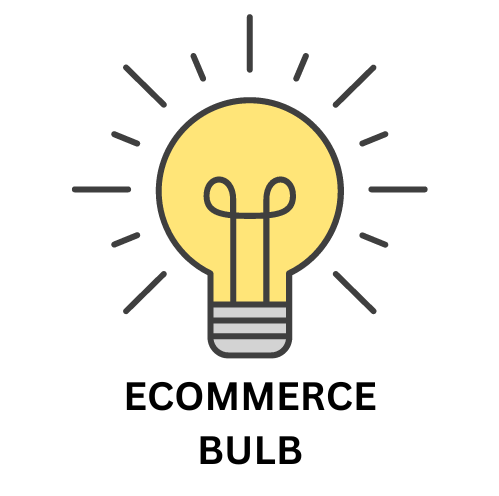In order to decide which ecommerce platform to use, Weebly vs Prestashop. A detailed comparison between features must be thoroughly done. If you want to decide which eCommerce platform to choose, there are many things to consider.
These are some examples of these factors:
- Cost.
- SEO friendliness.
- Page load speed.
- Canonical website URL.
- Indexing Control.
- Customizable HTML capabilities.
- Sitemap Generator.
- Integration with Google Analytics.
- Product Tagging and Categorization.
- Batch Uploading.
- Mobile Optimization.
- Built-in Blogging and Marketing Features.
- Social Sharing Buttons.
- Content Management Capabilities.
- Discount and promotion code tools.
- Easy to use Checkout.
- Reporting tools and custom reports.
- Integration of email marketing tools.
- Multiple payment options.
- Flexibility to add new eCommerce features.
- Exclusive features.
- Cons and pros.
Here we’ll discuss these factors to help you decide which platform is better for you, Weebly or Prestashop. And at the end of the discussion, we’ll recap and make a comparison for the scores of all these points to find out which eCommerce platform has the higher score, so that you’ll have a good view about both of them.

Pricing (Weebly vs Prestashop):

Here’s a breakdown of the pricing structures of Weebly and PrestaShop:
Weebly:
- Free plan: Offers basic website creation and limited ecommerce functionalities with limited storage and bandwidth.
- Paid plans: Start at $6 per month (billed annually) and offer increased storage, bandwidth, and additional features like abandoned cart recovery, email marketing tools, and phone support.
- Transaction fees: Weebly charges transaction fees on each sale made through your online store, ranging from 3% to 0% depending on your chosen plan.
PrestaShop:
- Free to download and use: PrestaShop is open-source software, meaning you can download and install it for free on your own web hosting platform.
- Hosting costs: You will need to pay for web hosting separately to run your PrestaShop store. Hosting costs vary depending on the provider and chosen plan.
- Additional costs: You might incur additional costs for themes, plugins, and extensions to add specific functionalities or desired design elements to your store. Some themes and plugins can be free, while others require a one-time purchase or a subscription fee.
Here’s a table summarizing the key differences:
| Feature | Weebly | PrestaShop |
|---|---|---|
| Base cost | Free plan available, Paid plans start at $6/month | Free to download and use |
| Additional costs | Transaction fees | Web hosting, themes, plugins (optional) |
| Overall cost | Can be relatively inexpensive for small stores | Can be potentially more cost-effective in the long run for large stores |

SEO Capabilities (Weebly vs Prestashop):

When it comes to Search Engine Optimization (SEO), both Weebly and PrestaShop offer functionalities to improve your online store’s visibility in search engine results, but their capabilities differ:
Weebly:
- Basic SEO features: Weebly offers some basic built-in features like:
- Meta title and description editing: Allows you to edit the title tags and meta descriptions of your website pages and products, which play a role in search engine optimization.
- Mobile-friendly design: Weebly websites are generally mobile-friendly, which is an essential SEO factor.
- Limited control over technical SEO: Weebly has limited control over technical SEO aspects like sitemap generation and robots.txt configuration, which can impact search engine crawling and indexing.
PrestaShop:
- More comprehensive SEO features: PrestaShop offers a wider range of SEO functionalities, including:
- Advanced meta tag editing: Allows for more granular control over meta tags beyond titles and descriptions.
- Built-in SEO modules: PrestaShop offers various free and paid modules specifically designed for SEO purposes, such as sitemap generation, URL management, and content optimization tools.
- Greater control over technical SEO: PrestaShop provides more control over technical SEO aspects like robots.txt editing, URL customization, and sitemap configuration.
Overall:
- For basic needs: Weebly’s basic SEO features might suffice if you have a small online store and prioritize simplicity.
- For advanced SEO optimization: PrestaShop offers more comprehensive features and greater control over technical aspects, making it a better choice for users who want to optimize their store’s ranking in search results.

PageLoad Speed (Weebly vs Prestashop):

It’s difficult to definitively say which platform, Weebly or PrestaShop, offers universally faster page load speeds, as it depends on various factors beyond the platform itself. However, here’s a breakdown of the general tendencies and considerations:
Weebly:
- Potentially faster for beginners: Weebly’s out-of-the-box themes and functionalities are generally optimized for speed, making it easier for users with limited technical knowledge to maintain a relatively fast website.
- Limited control over optimization: Weebly offers limited options for advanced users to fine-tune website elements and code for optimal speed.
PrestaShop:
- Potentially faster with proper optimization: PrestaShop offers more control over website elements and code, allowing users with technical expertise to optimize various aspects like caching, image compression, and server configurations for potentially faster loading times.
- Slower with default settings and lack of optimization: PrestaShop relies more heavily on user configuration for optimal speed. Without proper optimization, websites built on PrestaShop can experience slower loading times, especially for complex stores with extensive plugins or customizations.

Canonical Website URL (Weebly vs Prestashop):

Both Weebly and PrestaShop allow you to manage canonical URLs for your website and products, but their approaches and functionalities differ slightly:
Weebly:
- Limited control over canonical URLs: Weebly doesn’t offer direct control over setting canonical URLs for individual pages or products within its interface.
- Automatic generation: Weebly might automatically generate canonical URLs based on its internal logic, but you cannot manually override or customize them.
- Potential issues with duplicate content: This lack of control can lead to potential issues with duplicate content if your website has dynamically generated pages or similar product descriptions across different categories.
PrestaShop:
- Manual control over canonical URLs: PrestaShop provides more control over managing canonical URLs. You can typically access settings within the product or page editing interface to specify the desired canonical URL for each product or page.
- Improved control over duplicate content: This manual control allows you to better manage potential duplicate content issues by ensuring each page has a unique and well-defined canonical URL.
Here’s a table summarizing the key differences:
| Feature | Weebly | PrestaShop |
|---|---|---|
| Control over canonical URLs | Limited, automatic generation | Manual control |
| Customization options | No | Yes, for individual pages and products |
| Potential for duplicate content | Higher | Lower |

Indexing Control (Weebly vs Prestashop):

When it comes to controlling how search engines index your website content, Weebly and PrestaShop offer different levels of control:
Weebly:
- Limited control over indexing: Weebly offers minimal options to directly control how search engines index your website content. You cannot typically block specific pages from being indexed or influence the way search engines crawl and understand your website structure.
- Reliance on robots.txt: Weebly might generate a basic robots.txt file that provides some indexing instructions to search engines, but you have limited control over editing or customizing it.
PrestaShop:
- More control over indexing: PrestaShop offers greater flexibility in managing how search engines index your website. You can typically access functionalities to:
- Block specific pages or sections from indexing: This can be helpful for pages like your admin panel or shopping cart, which you don’t want to appear in search results.
- Edit the robots.txt file: This allows you to fine-tune how search engine crawlers interact with your website, potentially improving indexing efficiency and avoiding unnecessary crawling of irrelevant content.
Overall:
- For basic needs: Weebly’s limited control might be sufficient if you’re not deeply concerned about advanced SEO strategies.
- For advanced SEO control: PrestaShop provides more functionalities for users who want to refine indexing behavior and optimize their website’s search engine visibility.

Customizable HTML Capabilities (Weebly vs Prestashop):

The level of control you have over customizing website code using HTML differs significantly between Weebly and PrestaShop:
Weebly:
- Limited HTML editing: Weebly primarily uses a drag-and-drop interface for website creation. While it offers some basic options to edit HTML and CSS within specific sections of your website, these functionalities are limited and might not be suitable for extensive code modifications.
- Not ideal for advanced customization: Weebly’s focus on a user-friendly, code-free environment makes it less suitable for users who require in-depth customization using HTML or other programming languages.
PrestaShop:
- Extensive HTML editing capabilities: PrestaShop is built on open-source technology, and its core functionalities rely heavily on HTML, CSS, and PHP. This allows you to directly access and edit the website’s code for extensive customization and tailoring of the design, layout, and functionalities.
- Highly customizable: PrestaShop caters to users comfortable with coding and provides a high degree of control over the website’s appearance and behavior through HTML and other languages.
Here’s a table summarizing the key differences:
| Feature | Weebly | PrestaShop |
|---|---|---|
| Direct HTML editing | Limited options | Extensive capabilities |
| Suitability for advanced customization | Not ideal | Highly customizable |
| Technical expertise required | Limited | Necessary |

Sitemap Generators (Weebly vs Prestashop):

Both Weebly and PrestaShop offer functionalities to generate sitemaps, which are crucial for search engine optimization (SEO) as they help search engines discover and understand the structure of your website:
Weebly:
- Automatic sitemap generation: Weebly automatically generates a basic sitemap that includes your website’s main pages and might include product listings depending on your store’s setup.
- Limited control over content: You cannot typically customize the content or structure of the automatically generated sitemap in Weebly.
PrestaShop:
- Built-in sitemap module: PrestaShop offers a built-in module for generating sitemaps. This module allows you to:
- Generate and update sitemaps automatically: You can configure the module to automatically update the sitemap whenever you add new pages or products to your store.
- Customize the sitemap content: You can potentially exclude specific pages or content types from being included in the sitemap, which can be helpful for SEO optimization.
- Additional options: Some themes and plugins for PrestaShop might offer additional sitemap generation functionalities or features.
Here’s a table summarizing the key differences:
| Feature | Weebly | PrestaShop |
|---|---|---|
| Sitemap generation | Automatic | Built-in module with customization options |
| Control over content | Limited | More control over what’s included |
| Customization options | None | Can potentially exclude specific content and configure update frequency |

Integration With Google Analytics (Weebly vs Prestashop):

Both Weebly and PrestaShop offer functionalities to integrate with Google Analytics, a powerful tool for tracking website traffic, user behavior, and various other valuable insights:
Weebly:
- Built-in integration: Weebly offers built-in integration with Google Analytics. You can typically connect your Weebly website to your Google Analytics account through a simple setup process within the Weebly interface.
- Limited customization: Weebly’s built-in integration might offer basic tracking functionalities, but you might have limited options for customizing tracking codes or implementing advanced analytics features.
PrestaShop:
- Module-based integration: PrestaShop relies on modules for integrating with Google Analytics. You can find various free and paid modules in the PrestaShop marketplace that offer different functionalities for Google Analytics integration.
- More customization options: Modules typically offer greater control and customization compared to Weebly’s built-in integration. You might be able to configure tracking codes, enable specific features like e-commerce tracking, and access more detailed analytics data.
Here’s a table summarizing the key differences:
| Feature | Weebly | PrestaShop |
|---|---|---|
| Integration method | Built-in | Module-based |
| Ease of setup | Easier setup process | Requires installing and configuring a module |
| Customization options | Limited | More control and customization options |
drive_spreadsheetExport to Sheets
Additional factors to consider:
- Your technical expertise: Weebly’s built-in integration might be easier to set up for users with no coding experience. However, configuring modules in PrestaShop might require some technical knowledge.
- Desired level of control and data: If you need access to advanced analytics features or want to customize tracking behavior, PrestaShop’s modules offer more flexibility.
Overall:
- For basic tracking needs: Weebly’s built-in integration is a convenient option for getting started with Google Analytics.
- For advanced analytics users: PrestaShop’s modules provide more control, customization options, and access to detailed data for in-depth website analysis.

Product Tagging and Categorization (Weebly vs Prestashop):

Weebly:
- Basic tagging and categorization: Weebly allows you to assign product categories and tags. However, the options for managing and organizing these categories and tags might be limited compared to PrestaShop.
- Limited filtering and navigation: Weebly’s built-in functionalities for filtering and navigating products based on tags and categories might be less advanced.
PrestaShop:
- Advanced tagging and categorization: PrestaShop offers more comprehensive functionalities for managing product tags and categories. You can:
- Create nested category structures: This allows you to organize products into subcategories for better organization and user navigation.
- Assign multiple tags to each product: This enables more granular categorization and product discovery based on various attributes.
- Advanced filtering and navigation: PrestaShop allows you to create more sophisticated filtering and navigation options based on product tags and categories. This can improve the user experience for your customers by allowing them to easily find the products they’re looking for.
Here’s a table summarizing the key differences:
| Feature | Weebly | PrestaShop |
|---|---|---|
| Tagging options | Basic | Advanced (multiple tags per product) |
| Category management | Limited | Advanced (nested categories) |
| Filtering and navigation | Basic | Advanced (more customization options) |

Batch Uploading (Weebly vs Prestashop):

Batch uploading refers to the ability to upload multiple products to your online store at once, which can be a significant time-saver, especially for stores with a large inventory. Here’s a comparison of Weebly and PrestaShop regarding batch uploading:
Weebly:
- Limited batch uploading: Weebly does not offer native batch upload functionality. You can only add products one by one through the Weebly interface.
- Workarounds: Some third-party apps or workarounds using CSV files might be available, but these options are often limited, unreliable, or require additional technical knowledge.
PrestaShop:
- Built-in batch upload functionality: PrestaShop offers a built-in feature for batch uploading products using a CSV (Comma-Separated Values) file. This allows you to create a CSV file with product details like name, description, category, price, etc., and upload it to your store, adding multiple products in one go.
- More control and flexibility: PrestaShop provides more control and flexibility during the batch upload process. You can map specific data points in your CSV file to corresponding product fields in your store, ensuring accurate data import.
Here’s a table summarizing the key differences:
| Feature | Weebly | PrestaShop |
|---|---|---|
| Native batch upload | No | Yes (using CSV file) |
| Ease of use | More complex workarounds required | Easier with built-in functionality |
| Control and flexibility | Limited | More control over data mapping and import process |

Mobile Optimization (Weebly vs Prestashop):

Weebly:
- Responsive design: Weebly websites are generally built with a responsive design, meaning they automatically adjust their layout and content to display optimally on various devices, including desktops, tablets, and smartphones.
- Limited customization: Weebly offers limited control over the mobile-specific appearance or functionalities of your store. You can’t directly edit the mobile layout or fine-tune the mobile experience beyond the general theme options.
PrestaShop:
- Responsive themes: Most PrestaShop themes are designed to be responsive, ensuring a decent mobile experience.
- More customization options: PrestaShop offers more control over the mobile experience. You can potentially:
- Use mobile-specific themes or plugins designed to optimize the look and feel of your store on mobile devices.
- Customize the mobile layout to some extent, depending on the theme and your technical expertise.
Here’s a table summarizing the key differences:
| Feature | Weebly | PrestaShop |
|---|---|---|
| Responsive design | Built-in | Mostly available through themes |
| Customization options | Limited | More control, potentially requiring technical knowledge |

Built-in Blogging & Marketing Features (Weebly vs Prestashop):

Weebly:
- Strong built-in blogging platform: Weebly offers a robust and user-friendly blogging platform integrated directly within the website builder. This allows you to easily create blog posts, schedule them, and manage comments, all within the same interface.
- Marketing features: Weebly provides basic SEO tools like meta tag customization, sitemap generation, and social media integration to help you promote your store. Additionally, Weebly offers paid plans with email marketing features like email campaigns and newsletter creation.
PrestaShop:
- Limited built-in blogging: PrestaShop doesn’t offer a dedicated blogging platform. While you can create informative content pages within PrestaShop, it’s not designed specifically for regular blog publishing and lacks features like scheduling or comment management.
- Marketing features: PrestaShop relies on modules for most marketing functionalities. You can find various free and paid modules in the PrestaShop marketplace for tasks like email marketing, social media integration, and SEO optimization. However, managing and configuring these modules might require more technical expertise compared to Weebly’s built-in features.
Here’s a table summarizing the key differences:
| Feature | Weebly | PrestaShop |
|---|---|---|
| Built-in blogging platform | Yes, robust and user-friendly | No, limited to informative pages |
| SEO tools | Basic built-in features | Requires modules, might require technical expertise |
| Email marketing | Available in paid plans | Requires modules, might require technical expertise |

Social Sharing Buttons Availability (Weebly vs Prestashop):

Weebly:
- Built-in social sharing buttons: Weebly offers built-in social sharing buttons for popular platforms like Facebook, Twitter, Pinterest, and more. You can typically customize these buttons and choose where they appear on your product pages and other website sections.
PrestaShop:
- Module-based approach: PrestaShop relies on modules for adding social sharing buttons. You can find various free and paid modules in the PrestaShop marketplace that offer different functionalities and customization options for social sharing buttons.
Here’s a table summarizing the key differences:
| Feature | Weebly | PrestaShop |
|---|---|---|
| Social sharing buttons availability | Built-in | Requires modules |
| Customization options | Limited customization options for built-in buttons | More customization options with specific modules |

Content Management Capabilities (Weebly vs Prestashop):

Weebly:
- Focus on ease of use: Weebly is a user-friendly website builder primarily focused on creating basic websites and online stores with drag-and-drop editing functionalities.
- Limited content management options: Content creation and editing capabilities are relatively basic. While you can create various pages with text, images, and videos, options for customizing layouts, content types, and managing large amounts of content are limited.
- Suitable for beginners and basic needs: Weebly is ideal for creating personal websites, small business websites, or simple online stores with a limited number of pages and products.
PrestaShop:
- Focus on e-commerce functionality: PrestaShop is an open-source e-commerce platform specifically designed for building and managing online stores.
- Extensive content management features: PrestaShop offers a wider range of functionalities for managing various types of content, including:
- Product editing and management: Detailed product pages with features, variations, and specifications.
- Blog creation: Although not specifically designed for extensive blogging, PrestaShop allows creating blog posts and managing them alongside your store content.
- CMS (Content Management System) features: Basic functionalities for managing other types of content like landing pages, informative pages, and static content.
- Suitable for complex online stores and experienced users: PrestaShop caters to users with some technical knowledge and is well-suited for managing large product catalogs and complex content structures within an online store.
Here’s a table summarizing the key differences:
| Feature | Weebly | PrestaShop |
|---|---|---|
| Focus | User-friendly website builder | E-commerce platform |
| Content editing | Drag-and-drop, limited options for complex content | More granular control over various content types |
| Content types | Basic web pages, limited customization | Products, blog posts, CMS pages, extensive product data management |
| Learning curve | Easier to learn for beginners | Steeper learning curve, requires some technical knowledge |
| Suitable for | Basic websites, small online stores | Complex online stores, larger product catalogs, experienced users |

Discounts & Promotion Codes (Weebly vs Prestashop):

Weebly:
- Limited options: Weebly offers basic functionalities for creating discounts and promotion codes. You can typically:
- Create percentage-based discounts for your entire store or specific products.
- Set a start and end date for the promotion.
- Generate a unique coupon code for the discount.
- Limited targeting and customization: Weebly might have limited options for targeting specific customer segments or customizing the application of discounts (e.g., minimum purchase amount).
PrestaShop:
- More advanced features: PrestaShop offers a wider range of functionalities for managing discounts and promotion codes, including:
- Different discount types: Percentage discounts, fixed amount discounts, free shipping promotions, etc.
- Cart rule creation: Allows for more specific targeting based on various criteria like customer groups, product categories, minimum purchase amount, etc.
- Stacking and combining discounts: You can potentially set rules for how different promotions can be combined or stacked.
- Advanced code management: Generate different types of codes (public, private, one-time use), set expiry rules, track usage statistics, and more.
Here’s a table summarizing the key differences:
| Feature | Weebly | PrestaShop |
|---|---|---|
| Discount types | Limited (typically percentage) | More diverse (percentage, fixed amount, free shipping, etc.) |
| Targeting and customization | Limited options | More options for targeting specific customer segments and customizing discount application |
| Code management | Basic | Advanced features like code types, expiry rules, usage tracking |

Easy to Use Checkout (Weebly vs Prestashop):

Weebly:
- Generally easier for beginners: Weebly’s checkout process is typically simpler and more user-friendly. It focuses on a streamlined experience with minimal steps and clear instructions.
- Limited customization options: While Weebly offers basic settings for customizing your checkout page, the level of customization is relatively limited compared to PrestaShop.
- Fewer features: Weebly’s checkout might have fewer features compared to PrestaShop, such as guest checkout options or advanced shipping configurations.
PrestaShop:
- More complex for beginners: PrestaShop offers more functionalities and customization options for the checkout process, which can be overwhelming for beginners.
- Greater customization potential: You can potentially customize various aspects of the checkout, such as adding additional checkout steps, enabling guest checkout, and configuring advanced shipping options.
- Steeper learning curve: Setting up and managing a customized checkout process in PrestaShop might require more time and effort to learn and implement compared to Weebly.
Here’s a table summarizing the key differences:
| Feature | Weebly | PrestaShop |
|---|---|---|
| Ease of use | Generally easier for beginners | More complex for beginners |
| Customization options | Limited | More customization options |
| Features | Fewer features | More features and functionalities |
| Learning curve | Easier to learn | Steeper learning curve |

Reporting Tools and Custom Reports (Weebly vs Prestashop):

Weebly:
- Limited built-in reports: Weebly offers basic built-in reports providing insights into website traffic, sales, and visitor behavior. These reports might be sufficient for understanding basic website performance but lack detailed data or customization options.
- Limited custom report generation: Weebly might have limited functionalities for creating custom reports tailored to your specific needs.
PrestaShop:
- More extensive built-in reports: PrestaShop offers a wider range of built-in reports covering various aspects like sales, customers, products, traffic, marketing, and more. These reports provide more granular data and insights into your online store’s performance.
- Custom report generation capabilities: PrestaShop allows you to generate custom reports using various criteria and filters. You can potentially create reports specific to your needs, such as analyzing sales by product category, customer demographics, or marketing campaign performance.
Here’s a table summarizing the key differences:
| Feature | Weebly | PrestaShop |
|---|---|---|
| Built-in reports | Limited | More extensive, covering various aspects |
| Custom report generation | Limited functionalities | More capabilities for creating reports based on your specific needs |

Integration of Email Marketing Tools (Weebly vs Prestashop):

Weebly:
- Built-in email marketing (paid plans): Weebly offers built-in email marketing features in its paid plans. This allows you to create email campaigns, manage subscriber lists, and track basic campaign performance directly within the Weebly platform.
- Third-party integrations: Weebly also supports integration with various third-party email marketing tools through its app marketplace. This allows you to connect your Weebly store with popular email marketing services like Mailchimp, Constant Contact, or Klaviyo for more advanced functionalities.
PrestaShop:
- Module-based approach: PrestaShop relies on modules for integrating with email marketing tools. You can find various free and paid modules in the PrestaShop marketplace that offer functionalities like signup forms, subscriber list management, and campaign creation.
- Wider range of options: PrestaShop offers a wider range of email marketing modules compared to Weebly’s built-in features or app integrations. This allows you to choose a module that caters to your specific needs and budget.
Here’s a table summarizing the key differences:
| Feature | Weebly | PrestaShop |
|---|---|---|
| Built-in email marketing | Available in paid plans | No built-in features |
| Third-party integrations | Limited options through app marketplace | Wider range of options through modules |
| Ease of use | Built-in features might be easier for beginners | Requires installing and configuring modules |

Multiple Payment Options (Weebly vs Prestashop):

Weebly:
- Limited built-in options: Weebly offers a limited number of built-in payment options through its partnership with specific providers like Stripe and Square. These options might be sufficient for basic needs, but the selection is not as extensive as some other platforms.
- Limited customization: Weebly might offer limited control over the payment processing experience for your customers.
PrestaShop:
- Module-based approach: PrestaShop relies on modules for integrating with various payment processors. You can find a wider range of free and paid modules in the PrestaShop marketplace, allowing you to connect with popular payment gateways like Stripe, PayPal, Authorize.Net, and many others.
- More customization options: Depending on the chosen module, you might have more control over the payment processing experience, such as customizing the checkout page layout or enabling specific payment methods based on your location or customer segments.
Here’s a table summarizing the key differences:
| Feature | Weebly | PrestaShop |
|---|---|---|
| Payment options | Limited built-in options | Wider range through modules |
| Customization: | Limited control over checkout experience | More customization options with specific modules |

Flexibility to Add New eCommerce Features (Weebly vs Prestashop):

Weebly:
- Limited flexibility: Weebly offers a closed system with limited built-in functionalities for adding new features. While Weebly App Center provides some third-party app integrations, the options are restricted and might not cater to your specific needs.
- Limited customization: Weebly’s platform offers minimal opportunities for customizing the core functionalities or adding features beyond the available options.
PrestaShop:
- High flexibility: PrestaShop is an open-source platform known for its extensive extensibility. You can add various new functionalities and features through:
- Modules: The PrestaShop marketplace offers a vast collection of free and paid modules covering various aspects like marketing, shipping, payments, product management, and more. This allows you to add specific features tailored to your unique needs.
- Custom development: Since PrestaShop is open-source, you can hire developers to create custom features and functionalities that are not available through existing modules. This approach offers the highest level of customization but requires technical expertise and budget allocation.
Here’s a table summarizing the key differences:
| Feature | Weebly | PrestaShop |
|---|---|---|
| Flexibility for adding new features | Limited | Highly flexible |
| Methods for adding new features | Limited app integrations | Modules and custom development |
| Customization options | Limited | Extensive customization possibilities |

Exclusive Features (Weebly vs Prestashop):

Weebly:
- Built-in blogging platform: Weebly includes a robust and user-friendly blogging platform directly integrated within the website builder. This allows for easy creation, scheduling, and management of blog posts, making it suitable for businesses that heavily rely on content marketing strategies.
- Drag-and-drop website editing: Weebly features a visual drag-and-drop interface for website and store creation, making it extremely user-friendly and accessible even for beginners with no coding experience.
PrestaShop:
- Open-source platform: PrestaShop being an open-source platform offers greater flexibility and customization potential. This allows for extensive modifications to the core functionalities and development of unique features through custom coding or utilizing advanced functionalities not readily available in closed platforms like Weebly.
- Multi-store management: PrestaShop allows you to manage multiple online stores from a single platform, making it ideal for businesses that operate various brands or stores under one umbrella.

Market Share (Weebly vs Prestashop):

Weebly:
- Global eCommerce platform market share: Weebly holds a relatively small market share in the global eCommerce platform landscape, estimated to be around 1.16% as per https://www.appmysite.com/integrations/.
PrestaShop:
- Global eCommerce platform market share: PrestaShop has a slightly larger market share compared to Weebly, estimated to be around 0.8% according to https://www.appmysite.com/integrations/.
It’s important to note that these are estimates and the actual market share can vary depending on the specific source and methodology used.
However, these numbers indicate that both Weebly and PrestaShop are not among the leading eCommerce platforms in terms of market share. Major players in the market include Shopify, WooCommerce, and Magento, which hold significantly larger shares.

Cons Of (Weebly vs Prestashop):

Drawbacks / Downsides of Weebly:
- Limited built-in functionalities: Weebly offers a basic set of features out of the box. If you need advanced functionalities for eCommerce, marketing, or content management, you might require additional integrations or workarounds.
- Limited customization options: Weebly offers limited control over the overall look and feel of your store and website. Customization options are primarily focused on choosing pre-designed themes and making minor adjustments.
- Limited scalability: Weebly might not be ideal for large and complex online stores requiring extensive product catalogs, advanced features, or high traffic volume.
- Pricing limitations: While Weebly offers free plans with basic functionalities, features suitable for serious eCommerce businesses are only available in paid plans, which can add ongoing costs.
Drawbacks / Downsides of PrestaShop:
- Steeper learning curve: PrestaShop has a steeper learning curve compared to Weebly. Setting up and managing your online store, especially for advanced functionalities, might require some technical knowledge or familiarity with the platform.
- Potential for technical challenges: PrestaShop relies on modules for many functionalities. Managing and configuring numerous modules can be time-consuming and might lead to compatibility issues or unexpected behavior.
- Limited customer support: Compared to some larger platforms, PrestaShop offers limited customer support, especially for free users. This can be problematic if you encounter technical difficulties or require assistance.
- Security considerations: As an open-source platform, PrestaShop requires active maintenance and security updates to address potential vulnerabilities. This might require some technical expertise or ongoing costs for professional maintenance.

Hidden Charges / Cost & Fees (Weebly vs Prestashop):

Weebly:
- Pricing plans: Weebly offers a free plan with limited features. To access functionalities necessary for most online stores, you’ll need to upgrade to a paid plan. Paid plans start at around $6 per month (billed annually) and increase in price as you unlock more features, storage, and bandwidth.
- Potential hidden costs: While Weebly’s pricing structure is relatively transparent, there might be additional costs to consider, such as:
- Transaction fees: Depending on the payment processor you choose, you might incur transaction fees for each sale made through your online store.
- App integrations: Some third-party app integrations within the Weebly App Center might have additional fees or require paid subscriptions to unlock their full functionalities.
- Domain name and SSL certificate: If you don’t already own a domain name and SSL certificate, you’ll need to factor in the costs of purchasing them separately or through Weebly’s services.
PrestaShop:
- Open-source platform: PrestaShop itself is free to download and use. However, running an online store with PrestaShop involves various potential costs:
- Web hosting: You’ll need to pay for web hosting to make your PrestaShop store accessible online. Costs can vary depending on the hosting provider and the resources required for your store.
- Domain name and SSL certificate: Similar to Weebly, you’ll need to purchase a domain name and an SSL certificate separately or through your chosen hosting provider.
- Modules: Many functionalities in PrestaShop are added through modules, which can be free or paid. While there’s a vast selection of free modules, some essential features or modules with specific functionalities might require paid licenses.
- Custom development: If you need features or functionalities beyond what’s available through modules, you might need to hire developers for custom development, which can be expensive.
- Maintenance and security: As an open-source platform, PrestaShop requires ongoing maintenance and security updates to address potential vulnerabilities. This can be done yourself if you have the technical expertise, or you might need to hire a developer or security professional, adding to the costs.
Overall:
- Weebly: While Weebly offers a free plan, accessing essential eCommerce functionalities requires paid plans, and there might be additional costs for transaction fees, app integrations, and domain name/SSL certificate.
- PrestaShop: While PrestaShop itself is free, running an online store with it involves various potential costs like web hosting, domain name, SSL certificate, modules, potential custom development, and ongoing maintenance/security considerations.

What are the Fortes of eCommerce Platforms (Weebly vs Prestashop)?
Weebly:
- Ease of use: Weebly’s user-friendly drag-and-drop interface and visual editing tools make it easy to set up and manage your online store, even for beginners with no coding experience.
- Suitable for beginners: Weebly’s simplicity and guided setup process make it a good option for individuals or small businesses starting their first online store.
- Built-in blogging platform: Weebly offers a robust and user-friendly blogging platform integrated directly within the website builder, which can be beneficial for businesses that heavily rely on content marketing strategies.
- App integrations: Weebly App Center provides access to various third-party app integrations that can extend the functionalities of your online store without requiring extensive coding knowledge.
PrestaShop:
- Open-source platform: PrestaShop being open-source offers greater flexibility and customization potential. This allows for extensive modifications to the core functionalities and development of unique features through custom coding or utilizing advanced functionalities not readily available in closed platforms like Weebly.
- Scalability: PrestaShop is a scalable platform that can accommodate large and complex online stores with extensive product catalogs, high traffic volume, and specific feature requirements.
- Wider range of features: PrestaShop offers a wider range of built-in features and functionalities compared to Weebly, catering to various aspects of eCommerce management, like product information management, marketing tools, and advanced shipping options.
- Module ecosystem: The vast PrestaShop marketplace offers a large collection of free and paid modules that can add various functionalities and features to your store, allowing for extensive customization and catering to specific needs.

Conclusion (Comparison Table for Weebly vs Prestashop):
As we can see from the detailed comparison between these two platforms (Weebly vs Prestashop) that the overall score for Prestashop is better than Weebly’s.
Note that the comparison was done with eCommerce and online business in mind.
I hope this could give you the required insight to choose which eCommerce Platform to use for your future projects!
Here is the full comparison, Prestashop vs Weebly Review in easy to comprehend bullet points:
| eCommerce Platform | Prestashop | Weebly |
|---|---|---|
| Price | 8.5 | 8.9 |
| SEO Friendliness | 9.0 | 8.6 |
| Page Load Speed | 7.8 | 7.5 |
| Canonical Website URL | 8.6 | 8.6 |
| Indexing Control | 9.1 | 9.0 |
| Customizable HTML capabilities | 9.3 | 8.9 |
| Sitemap Generator | 8.9 | 8.5 |
| Integration With Google Analytics | 8.9 | 8.5 |
| Product Tagging & Categorization | 8.8 | 8.0 |
| Batch Uploading | 7.9 | 7.5 |
| Mobile Optimization | 8.4 | 8.0 |
| Built-in Blogging & Marketing Features | 8.3 | 8.9 |
| Social Sharing Buttons | 8.8 | 8.5 |
| Content Management Capabilities | 8.8 | 8.4 |
| Discount & Promo Code Tools | 8.9 | 8.6 |
| Easy to Use Checkout | 7.9 | 7.5 |
| Reporting Tools & Custom Reports | 9.2 | 8.9 |
| Integration of Email Marketing Tools | 7.7 | 7.7 |
| Multiple Payment Options | 9.2 | 8.9 |
| Flexibility to Add New eCommerce Features | 9.2 | 8.8 |
| Exclusive Features | 8.2 | 7.6 |
| Market Share | 6.6 | 6.3 |
| CONS & PROS | 8.3 | 8.2 |
| Forte | 8.5 | 8.4 |
| Hidden Fees & Charges | 7.0 | 7.2 |
| Overall Assessment (Average) | 8.5 | 8.2 |


Leave a Reply